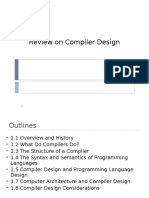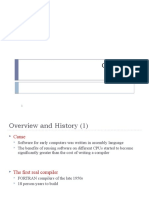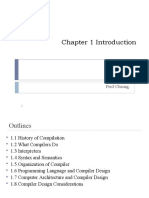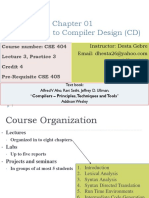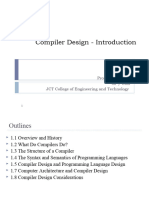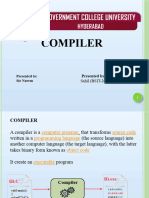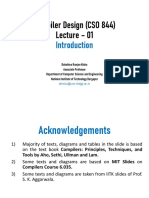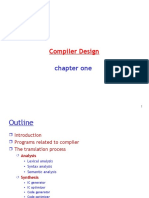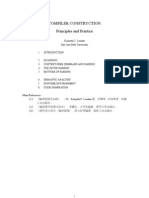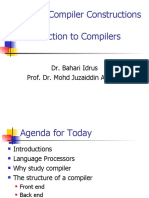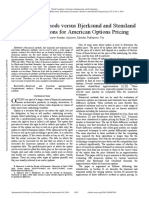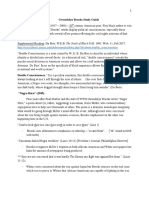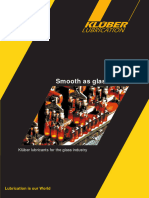0% found this document useful (0 votes)
12 views22 pagesStructure of Compiler
The document provides an overview of compilers, detailing their history, structure, and the processes involved in transforming programming languages into machine code. It discusses the types of code generated by compilers, the tasks of analysis and synthesis, and the importance of syntax and semantics in programming languages. Additionally, it highlights the relationship between programming language design and compiler design, as well as the various types of compilers, including debugging, optimizing, and retargetable compilers.
Uploaded by
MohammedJunedCopyright
© © All Rights Reserved
We take content rights seriously. If you suspect this is your content, claim it here.
Available Formats
Download as PPT, PDF, TXT or read online on Scribd
0% found this document useful (0 votes)
12 views22 pagesStructure of Compiler
The document provides an overview of compilers, detailing their history, structure, and the processes involved in transforming programming languages into machine code. It discusses the types of code generated by compilers, the tasks of analysis and synthesis, and the importance of syntax and semantics in programming languages. Additionally, it highlights the relationship between programming language design and compiler design, as well as the various types of compilers, including debugging, optimizing, and retargetable compilers.
Uploaded by
MohammedJunedCopyright
© © All Rights Reserved
We take content rights seriously. If you suspect this is your content, claim it here.
Available Formats
Download as PPT, PDF, TXT or read online on Scribd
/ 22
